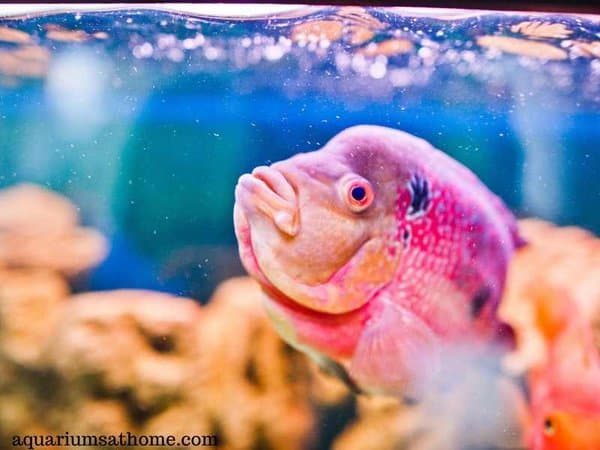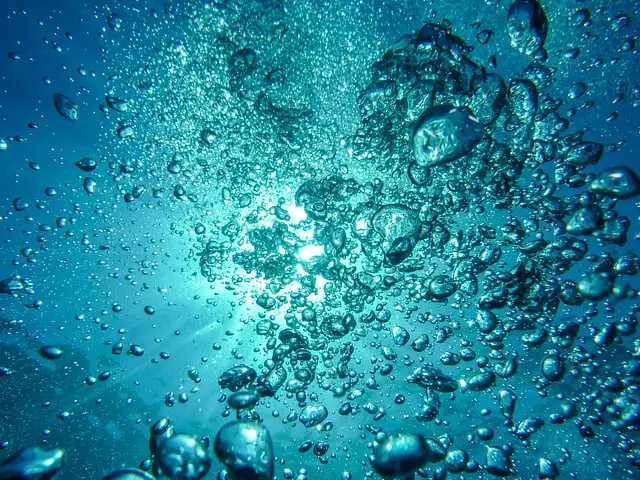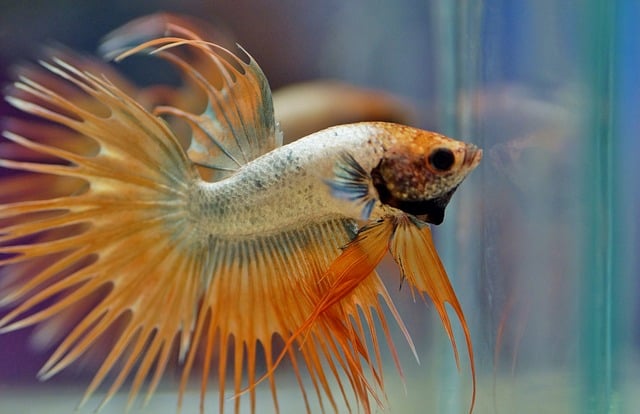As an aquarist, the health and safety of your pet fish should be your ‘number one’ priority. While you may think the only things your aquatic pets need to survive is water and some food, you couldn’t be more wrong. They also need air – yes, air! This raises the question, ‘can a fish drown in water?’
Fish don’t technically ‘drown’ because they don’t inhale the water, but they can suffocate and die from lack of oxygen. Fish need to breathe, just like any other living creature. They acquire O2 while swimming when dissolved air in the water moves across their gills.
Now that you know fish can’t theoretically ‘drown’ in water, let’s explore this topic further. Together we’ll delve deeper into the world of aquarium fish and learn what causes suffocation in a contained aquatic environment, how to prevent premature fish death due to lack of oxygen, and what equipment is needed in a tank to keep the water well-circulated and sufficiently aerated.
So, if you’re ready to learn more about keeping your aquarium water oxygen-rich and safe for all tank inhabitants, then let’s get started!
How Long does it Take for a Fish to Drown?
Fish can suffocate and die in as little as 3 to 4 minutes! If their gills stop moving or there’s not enough oxygen in the water, fish won’t survive for long in a captive aquatic environment. For this reason, it’s important not to transfer them from one tank to another unless the ‘new’ aquarium water has been properly equipped with an air stone or pump.
What Happens if Your Fish Drowns?
If your fish drowns, it means that it’s succumb to suffocation due to lack of oxygen. Watch for signs of low oxygen in the tank including labored breathing, lack of energy, rapid gill movements, and gasping near the surface.
To save a ‘drowning’ or suffocating fish, begin by removing it from the main aquarium and placing it in a quarantine tank with a fan setup to lightly blow air near the surface. The water should be clean with the ideal parameters for that species. Avoid bright lights or loud sounds and add liquid oxygen, if necessary.
How do You Help a Drowning Fish?
If your pet fish is exhibiting signs of suffocation, then you must act quickly. Start by testing the heat or temperature in the tank. Next, perform a 15-25% water change – replacing the old water with clean, cold tap water that’s been pre-treated with a water conditioner or dechlorinator.
Since warm water doesn’t hold oxygen for long, you can also drop a few ice cubes (placed in a plastic bag, not directly) into the aquarium or place a fan above the tank and blow air along the surface. The best way to keep the water properly aerated and circulated is to install a powered air pump or air stone.

Can Fish Drown if They Stop Swimming?
Fish can suffocate (not drown) if they stop swimming for too long. They need to keep moving so that the air in the water can flow over and through their gills. This is what provides them with the life-giving oxygen they need to survive. The only fish that won’t die if its stops swimming is a shark! Death by suffocation can happen in as little as 3 to 4 minutes so make sure to monitor your fish activity daily.
How to Get More Oxygen into a Fish Tank?
Keeping your aquarium water circulated and aerated is extremely important for the health and longevity of your pet fish. There are a variety of ways to do this, depending on your needs and budget. The typical 12 methods include the following:
- Stand on a step stool when doing tank top-ups – the extra height allows for more oxygen to enter the water before it’s released into the aquarium.
- Stir the water in the tank slowly with a large wooden spoon – this helps release trapped oxygen to increase aeration in the water through agitation.
- Add ice cubes – cool water holds oxygen better than warm water. Place ice cubes in a Ziploc bag so they don’t melt into the water and alter the conditions in the tank.
- Place a fan on top of the tank – by blowing air gently across the surface, a fan will not only help cool down the water but also create agitation to increase oxygen levels.
- Hook up an air pump – a high-quality, battery-powered air pump is the best way to keep water in an aquarium both aerated and circulated.
- Upgrade your filtration system – if you have a hang-on-back filter, consider upgrading to a canister filter – canister filters provided better, more reliable filtration and water flow.
- Add an aquarium bubbler – this device attaches to an air pump in a tank using an airline tube to create bubbles in the water and improve both circulation and aeration.
- Use a power head – powerheads provide better water circulation and aeration than bubblers, spray bars, or air stones by helping to keep detritus from settling along the bottom of the tank. Check out these powerheads on Amazon
- Add a lily pipe – lily pipes help filtration systems do their job while minimizing the need for expensive powered circulation equipment in a tank.
- Add live plants – greenery helps release oxygen into the tank while absorbing carbon dioxide and reducing ammonia…and it makes the tank more appealing to both fish and aquarists.
- Do a 50% water change – remove half of the tank’s existing liquid and replace it with clean, cool dechlorinated tap water to help circulate and aerate the aquatic environment.
- Keep fish that dwell in different benthic zones in a tank – housing fast-swimming schooling fish with active bottom-dwellers will keep water moving at all levels…just be sure their compatible.
How to Oxygenate a Fish Tank without a Pump?
While an electric air pump is still the best way to oxygenate your fish tank, there are other methods you can use to get the water circulating and improve aeration naturally. As mentioned above, you can add live plants such as amazon sword, Anubis, java fern, and Vallisneria to an aquarium.
Another option is to keep fast-swimming schooling or shoaling fish such as danios, guppies, rasboras, and tetras in an aquarium. These active fish help disperse oxygen-rich water throughout the entire tank which aerates the environment naturally for all inhabitants.
Yet another way to oxygenate a fish tank naturally and quickly is to use the ‘cup’ method – take a clean container and dip into the tank. Pour the water in the container back into the tank slowly from a decent height. Repeat the process at least 3 times and then test the water for dissolved oxygen using a kit.

Final Thoughts
To sum-up, it’s not possible for fish to ‘drown’ since they don’t inhale water. Instead, due to lack of oxygen in the tank, aquatic creatures will suffocate and ultimately die. To avoid this, it’s vital to keep the water in their environment not only clean but also well-circulated and efficiently aerated.
I hope this article has provided you with the answers you seek regarding fish and whether it’s possible for them to drown in water. Thanks for reading and good luck with your aquarist hobby.
Recommended Posts
How to Put More Oxygen in a Pond?
Clownfish Brooklynella Symptoms (How to Treat Your Clownfish)






